A rain cloud in a jar is a simple visual activity for understanding why rain falls and how clouds form.
Children can experiment with different sizes and shapes of shaving foam clouds and watch how they affect how the food colouring rain falls.
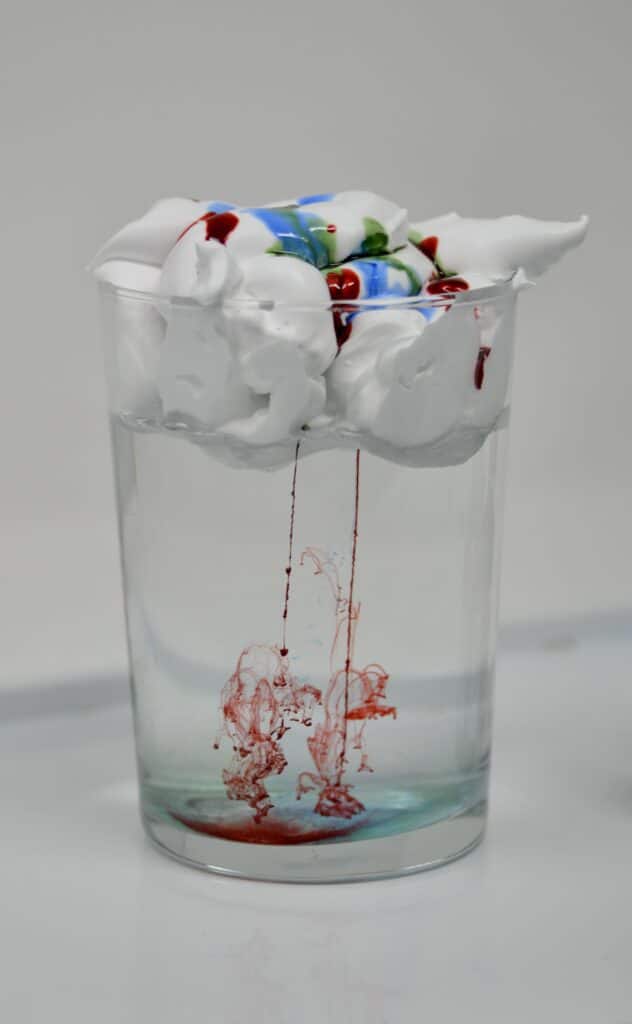
What is a cloud?
Clouds are droplets of water and crystals of ice. Their exact composition depends on the temperature. Clouds form when warm air rises, expands, and cools. Water molecules then attach to dust, pollution, and smoke particles. When these molecules come together, they form a cloud. Clouds float because the water droplets forming them are warmed up by the sun's heat, and warm air rises.
The altitude at which clouds form depends on several factors, such as air temperature, wind, and cloud size.
How to make a rain cloud in a jar
You'll need
A jar
Shaving Cream
Water
Food colouring
Dropper or pipette
Rain cloud in a jar instructions
Fill the jar about ¾ full with water
Cover with shaving cream to completely cover the surface of the water. The shaving foam represents a cloud.
Drip water over the shaving foam using a pipette
Drop food colouring over the shaving foam.
Watch the food colouring fall to the bottom of the jar.
How does a rain cloud in a jar work?
Clouds form when water vapour rises and cools back into water droplets to form clouds.
When a rain cloud reaches a certain mass, the water needs to escape and so breaks through the cloud to fall as rain. As you drip the water over the shaving cream cloud, the water starts to fall through the cloud.
Our rain cloud in a jar is a very simple model of how rain forms, but it is a lot of fun to set up and watch!
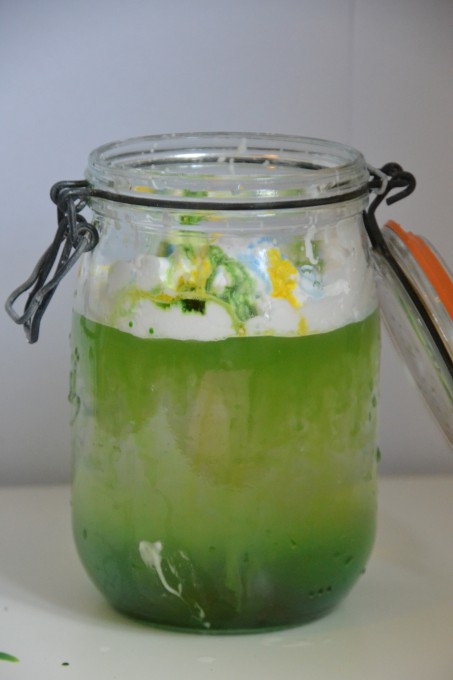
Why are rain clouds grey?
When clouds become full of water droplets, they are so thick that light cannot travel through them, making clouds look grey! This is why grey clouds are a sign that rain is about to fall.
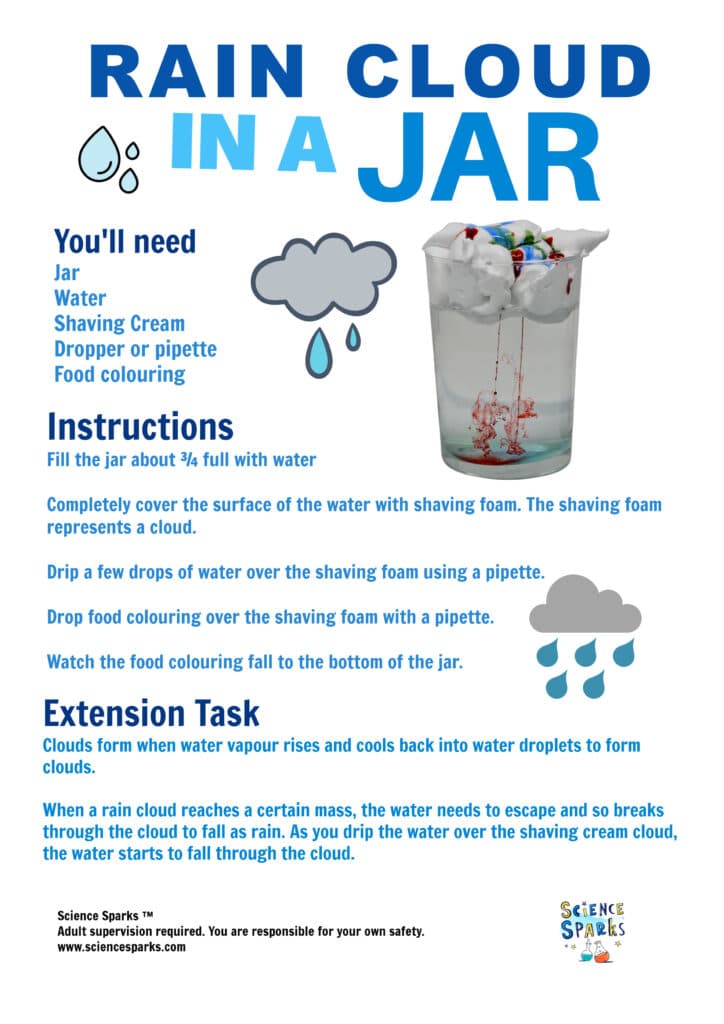
More rain and water science experiments
Make a model of the water cycle to learn how water is recycled over and over again!
Did you know most rain comes from the sea?
Find out why raindrops form sphere shapes.
Try a very simple evaporation investigation.
Inspiration Laboratories has a great cloud in a bottle activity.
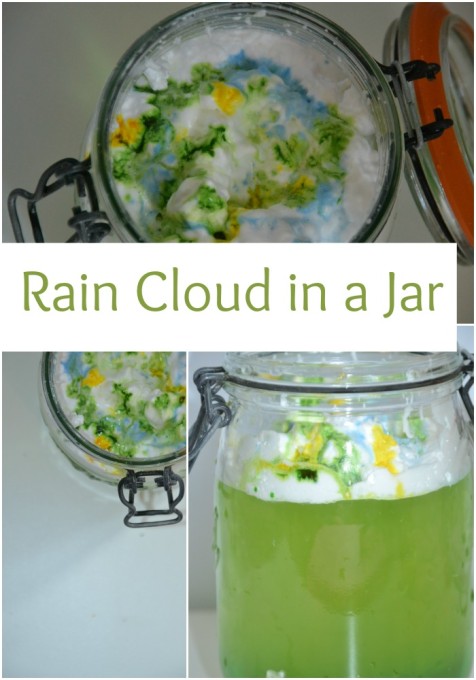
Last Updated on February 17, 2025 by Emma Vanstone
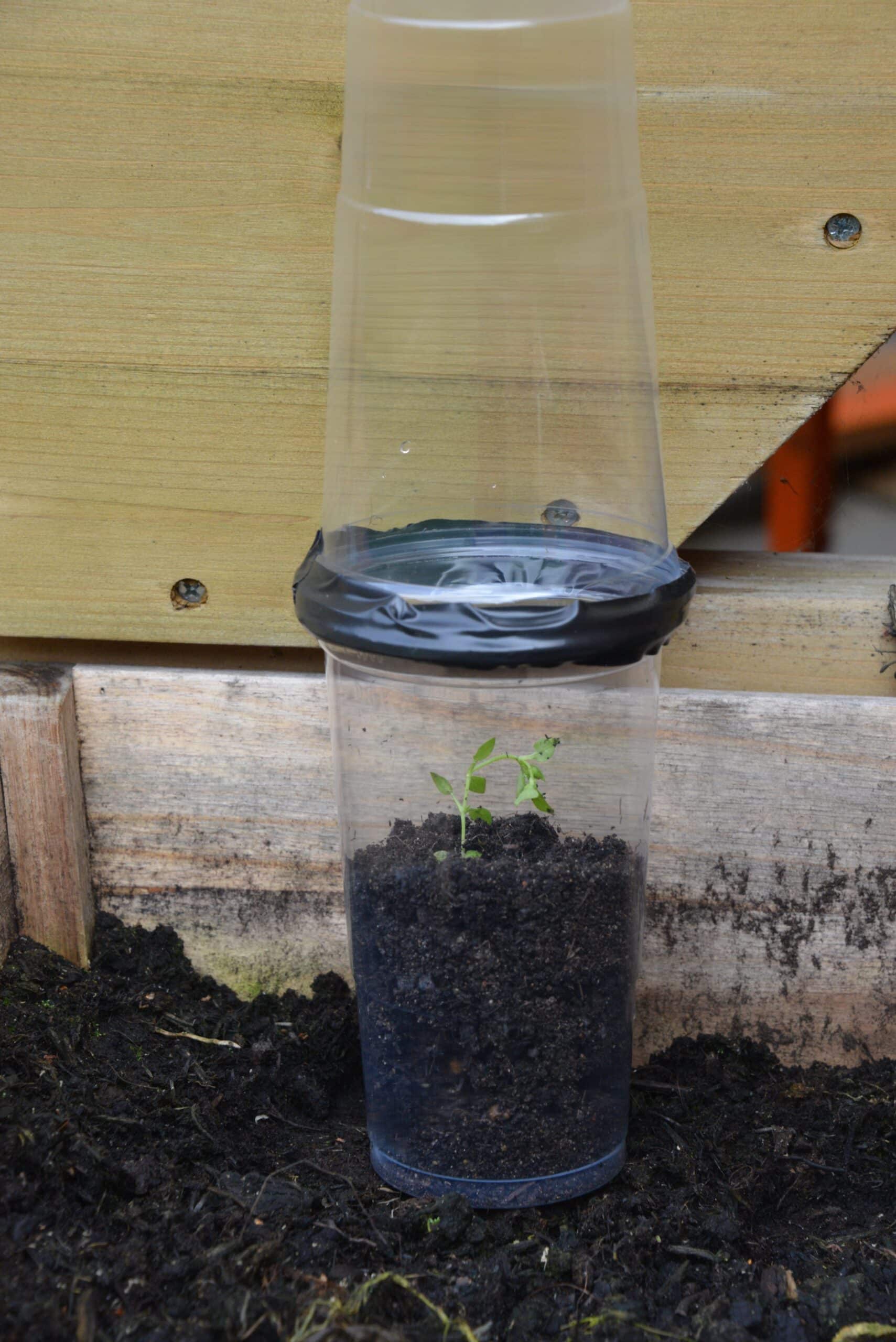
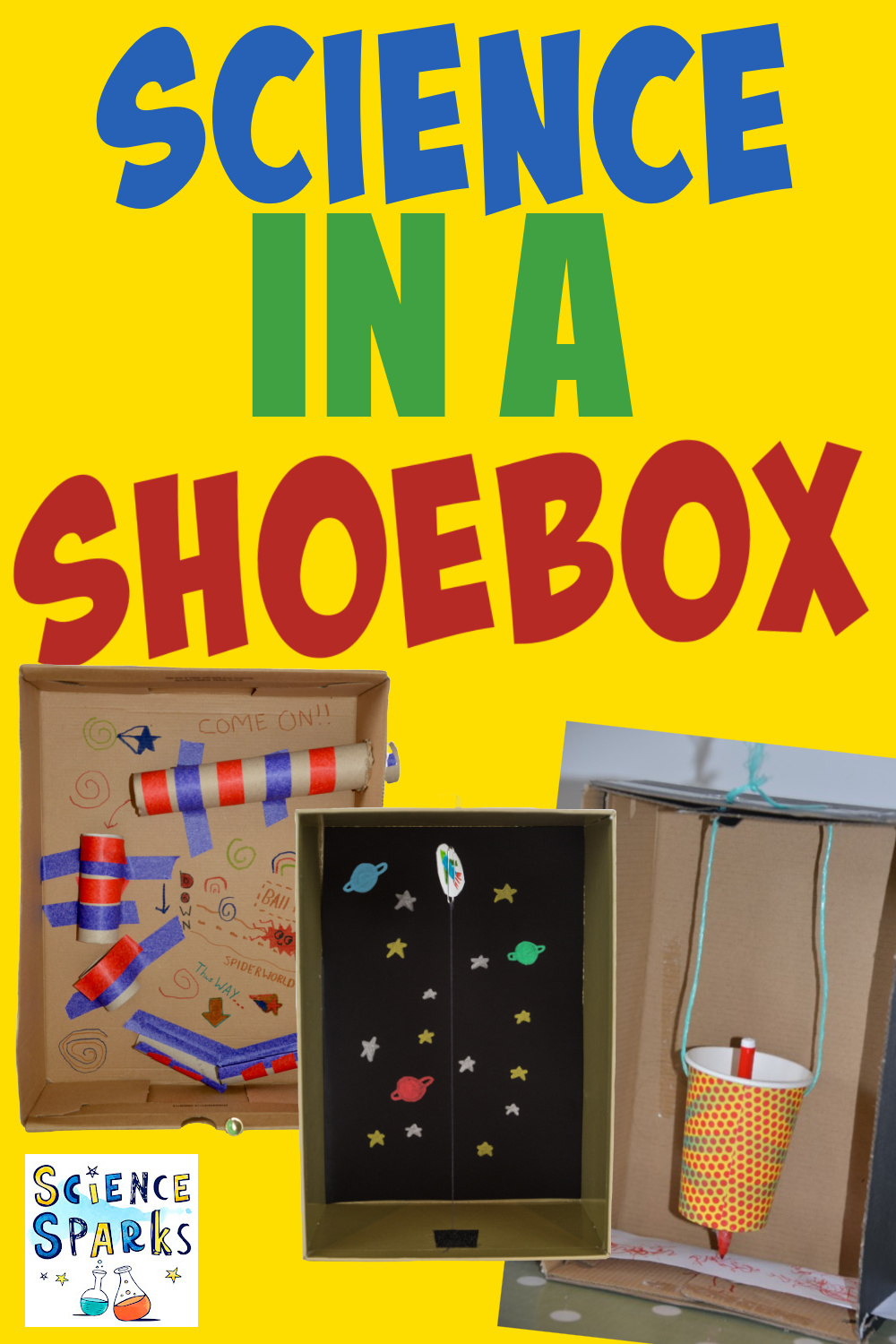
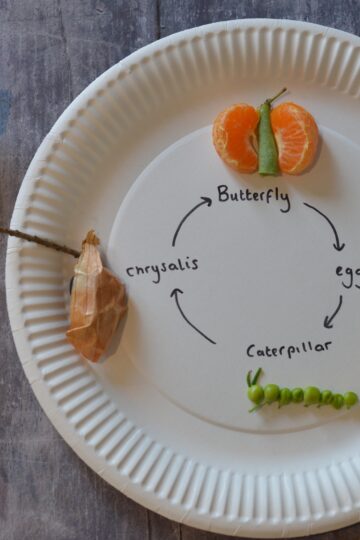

Arjun shibi says
its a great app to the students of my age ...... i'm so happy to use it and to now more about the science .....